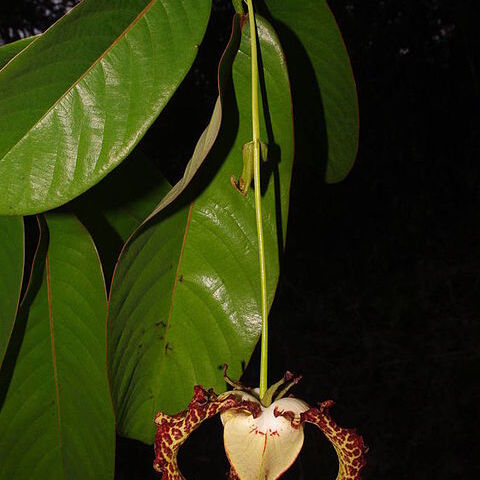Petals 6, in two unequal whorls, both valvate, all united at the base, often with undulate margins, the outer ones broad at the base, usually spreading or reflexed, the inner ones ± unguiculate, usually connivent at the apices or erect.
Trees or shrubs, sometimes climbing or scrambling, glabrous or with simple hairs, with young shoots which frequently blacken and become brittle on drying.
Flowers bisexual, solitary or more rarely paired or in few-flowered cymes, terminal or extra-axillary or in the axils of fallen leaves, pedicellate.
Carpels several, united to form a 1-locular globose or conic ovary with parietal placentation and numerous ovules; stigmas sessile, radiating.
Stamens ?, oblong or cuneiform to ± orbicular, with thecae extrorse, and connective-prolongation thickened; filaments absent.
Fruit a coriaceous or ligneous berry, globose to ellipsoid or obovoid, many-seeded.
Bracteole solitary, usually amplexicaul, persistent, often foliaceous.
Sepals 3, valvate, much shorter than the petals, free.
Seeds irregularly arranged, shining; aril absent.
Buds ovoid.
